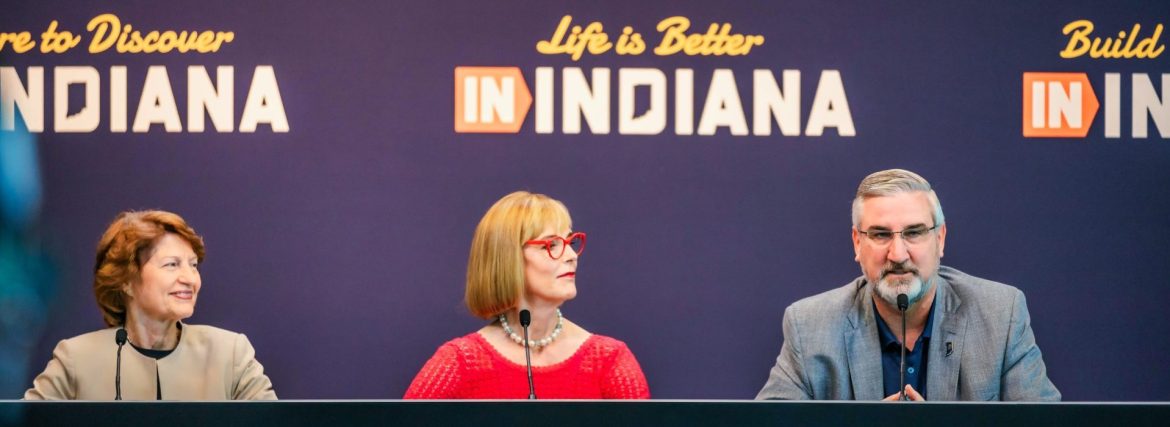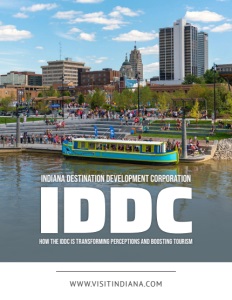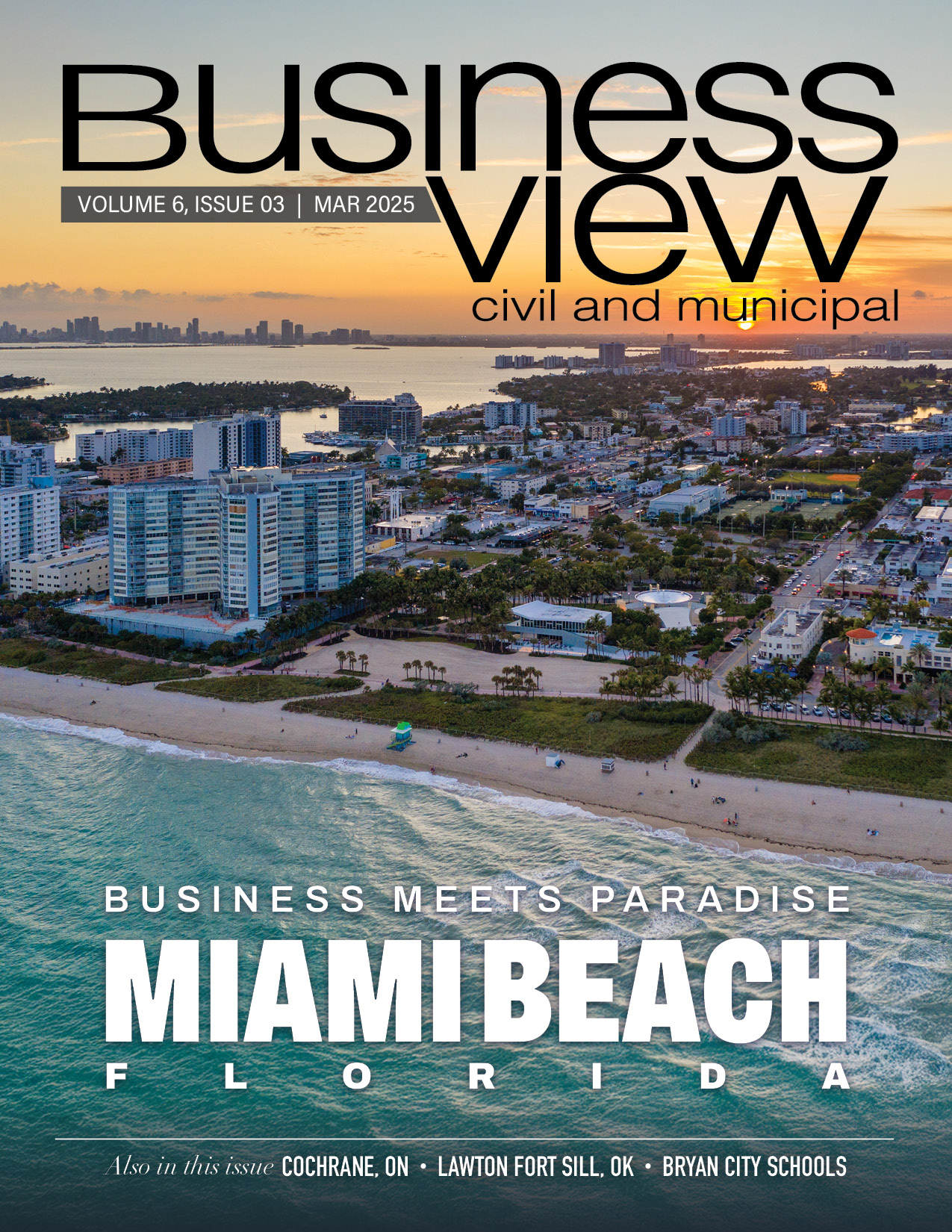How the IDDC is Transforming Perceptions and Boosting Tourism
Inside the strategic vision driving Indiana’s tourism renaissance and economic growth
Indiana’s approach to tourism and economic development took a significant turn in 2019 with the creation of the Indiana Destination Development Corporation (IDDC). Replacing the former Office of Tourism Development, this new entity came with an expanded mission and fresh leadership under Elaine Bedel, who transitioned from her previous role at the Indiana Economic Development Corporation to become Secretary and CEO.
The IDDC represents more than just a name change. It signifies a broader vision for Indiana’s future, one that recognizes tourism as just one element of a comprehensive development strategy. Bedel notes that while the organization replaced tourism, “the governor gave it a much broader mission.”
This expanded purpose reflects an understanding that visitors’ perceptions of Indiana often change dramatically once they experience the state firsthand. “We know when they come here, when they visit, when they spend time in Indiana, it totally changes their perception,” Bedel says. “We’ve got survey data that shows that.” This insight forms the foundation of the IDDC’s approach – bringing people to Indiana isn’t just about tourism dollars, but about transforming outdated perceptions into authentic appreciation.
Three Pillars: Visitors, Talent, and Graduates
The IDDC operates on a three-pillar strategy that goes well beyond traditional tourism promotion. “Attract and retain visitors, talent and graduates are our the three main focuses,” Bedel explains. This holistic approach recognizes that the same qualities that make Indiana attractive to visitors also make it appealing to potential residents and graduating students.
The first pillar remains dedicated to tourism, building on the organization’s heritage. “Getting visitors here is still a top priority,” says Bedel. But the vision extends into talent recruitment, acknowledging that quality of life serves as a powerful draw for businesses seeking to attract skilled workers. “The second pillar is telling our same story with a quality-of-life focus. What we tell visitors to come, see and do is really part of the quality of life that our residents experience as well,” Bedel points out.
Education represents the third strategic focus, with a particular emphasis on retaining graduates. “Working with colleges and universities to keep their graduates here, no matter where they come from in the country or the world,” Bedel says. This involves giving students “an experience in the community as to what it would be like to live there.” These efforts yield measurable results, as “surveys show, we really changed their perception on whether Indiana would be a great place to work from before the college student participated in our summer intern experience to after.”
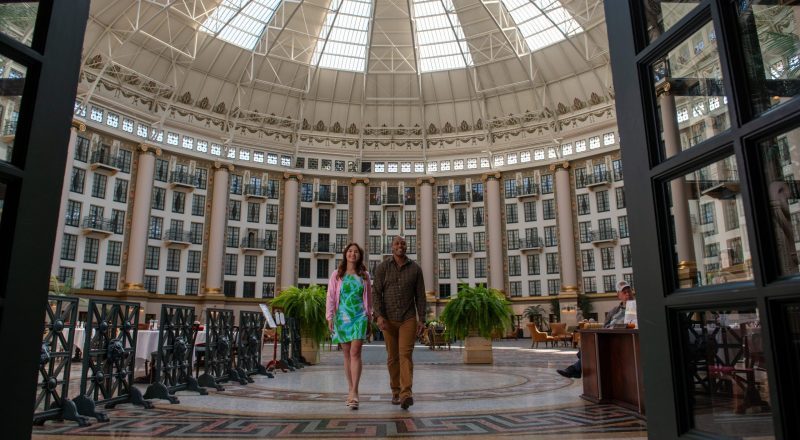
Bedel recognizes that these three pillars essentially tell variations of the same compelling story. “It’s the same story, just told differently to the different audiences,” she notes. The IDDC also focuses on an additional, informal fourth pillar: “to increase our Hoosier pride, make sure that people in the state of Indiana recognize what great opportunities we have for them here.”
Sharing Indiana’s Story: Tools for Attracting Talent
The IDDC equips businesses and communities with practical resources to showcase Indiana’s advantages when recruiting talent. “What we hear from corporate recruiters is that people may love the job, but then they say, ‘but why would I want to move to Indiana?'” Bedel says. “It’s true because they just don’t have information. They just don’t understand what we have to offer, what it would be like to live here.”
To address this knowledge gap, the IDDC has developed interactive online tools. “We’ve got a destination asset map that people can click on and say, ‘okay, where are the golf courses?’ You see all the golf courses.
“Where are the trails? Where are the breweries? Where are the museums and entertainment attractions?’ Bedel explains. The organization has also created comprehensive regional profiles on their website. “We’ve got different regions, different communities around the state where we just talk about what it would be like to live there from what jobs are available, what homes are available, what the schools are like, childcare, everything is there.”
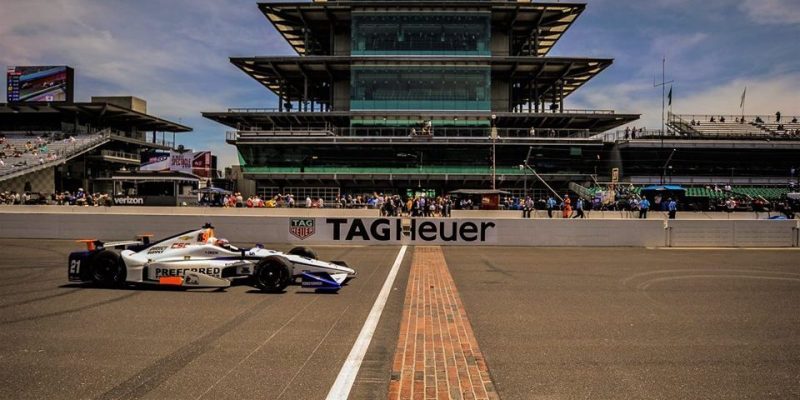
The IDDC actively partners with local communities through cost-sharing arrangements. “We do a co-op with them where they may put in $50,000, we put in $50,000. We do all the work for them to do a mini campaign,” Bedel notes. These collaborations produce social media content and videos tailored to each community’s specific needs.
A particularly innovative approach involves customizable video templates. “We do something called donut videos,” Bedel says. “There’s 11 different regions that we’ve done a separate donut video. The beginning talks about what you can do in that general region, as does the end. And in the middle, a corporation or a municipality can tell their own story.” This modular design allows businesses to incorporate testimonials or other personalized content.
Navigating Tourism Through the Pandemic
The IDDC faced an extraordinary challenge just months after its creation when COVID-19 brought global travel to a standstill. “It’s interesting because obviously our job is to get people here when everybody’s saying, ‘no, don’t come,'” Bedel recalls. The organization quickly shifted focus to supporting local businesses and ensuring safety protocols were in place for when travel resumed.
A key initiative, Hoosier Hospitality Promise, involved creating safety guidelines and public commitments. “We put out a website and worked with restaurants, hotels, retail businesses to say that they were willing to make the promise to keep things sanitized, keep people socially distant, all these things that the business was going to do,” Bedel explains. “They would take the promise and say, ‘yes, we’ve done all these things.'” This program extended to visitors as well, with individuals pledging to follow safety measures when patronizing Indiana businesses.
Financial support became crucial for organizations that typically relied on tourism revenue. “We received $10 million from the federal money that came into the state, and we did grants to arts and culture organizations as well as to destination marketing organizations,” says Bedel. “Unfortunately, the destination marketing organizations receive funding from the innkeepers’ tax for stays in hotels. When someone stays in a hotel, they pay a little bit which funds their local destination marketing organization. Well, no one was staying in hotels, so they weren’t getting funded.” The grants provided vital operating funds not only to tourism entities but also to cultural institutions like museums, theatres, and arts groups to keep the doors open and survive through the pandemic.
The IDDC used this period to encourage outdoor recreation, creating innovative programs to maintain interest. “We did what we call the State Nature Passport,” Bedel says. “If you as an individual downloaded this and you went to visit one of our state parks, recreation areas or forests, you could check in and then you would get points toward prizes. ” This strategy proved effective, as Bedel notes, “Residents enjoyed the outdoor experience and it has carried over. Today, the state parks get booked up right away when they open up for camping reservations.”
The Economic Impact of Tourism
The IDDC’s efforts to boost tourism have yielded impressive financial returns, demonstrating tourism’s significant economic impact. “The numbers show that we are trending in the right way,” Bedel says, though she acknowledges the organization faced initial funding limitations. “We inherited the budget from the Indiana Office of Tourism Development, which was four and a half million dollars. That was to run an organization and promote Indiana to the world. And that’s not enough.”
A crucial opportunity arose through pandemic recovery funds, enabling the IDDC to launch targeted marketing initiatives. “Because of the pandemic, the federal Economic Development Agency gave funding to each of the states to help the leisure and hospitality industry recover. We took the $5.6 million that we received, and we were able to use it for marketing,” Bedel explains. This funding supported campaigns in three strategic markets: “We did a campaign in just three markets, Chicago, St. Louis and Louisville. They spent about $ 2.1 million doing that and measured the return.”
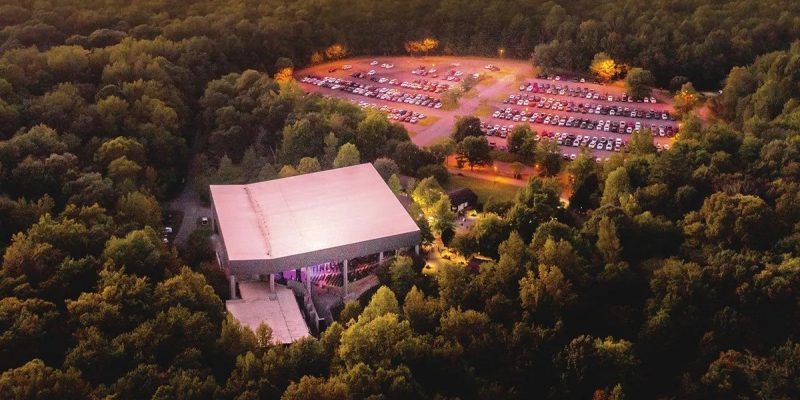
The investment quickly proved its value through measurable economic impact. “That first year we ended up getting a six to one return. For every $1 we spent promoting Indiana in those three markets, six new tax dollars were generated for the state of Indiana,” Bedel notes. The following year showed even stronger results. “We did the very same thing and got a ten to one return,” says Bedel.
These compelling metrics helped secure substantially increased funding: “We did get a $20 million budget; up from four and a half million during the 2023 legislative session.” With expanded resources, the IDDC has been able to target additional markets. “We can see progress every year that we’re doing this, that the more you’re out there, the more you’re telling your story, the more people come, and they spend money, and it continues to go positive.”
Success Stories: Regional Development Highlights
Across Indiana, communities are leveraging public-private partnerships to enhance attractions and quality of life. “All over the state we’ve been having some really good projects,” Bedel says. “When you think about the Fort Wayne area, they had a vision and they had leadership that was getting the necessary funding, and it’s really always a private public partnership where the state was offering some incentives and the private industry was coming in.”
Fort Wayne exemplifies this collaborative approach with several major investments. “They’ve got an international airport that’s undergoing about a 122 million investment. They’ve got their Arts United Centre, which is being renovated and modernized,” Bedel notes. The city has also developed impressive public spaces: “Promenade Park is a residential benefit in downtown Fort Wayne that runs along the river and it’s got all these amenities and public spaces and just a great way for people to be outside.”
West Lafayette has similarly invested in public recreational spaces. “They put in a new park. It’s a 30-acre park that they hadn’t had before,” Bedel explains. “They’ve got a lot of nature-based playscape areas as well as a big recreational pond where people can kayak and do things like that.”
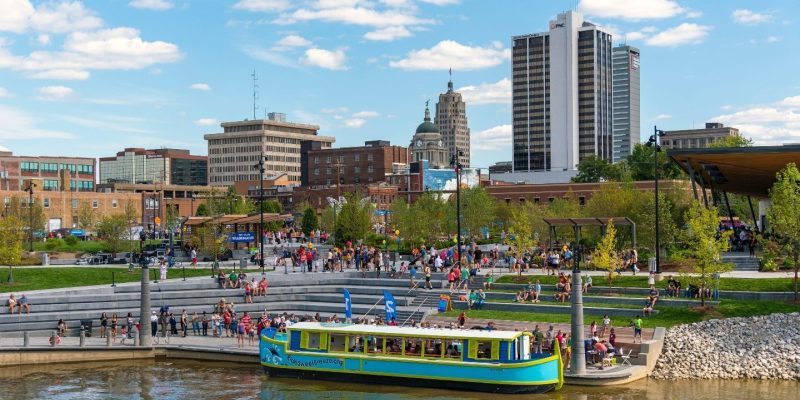
Southern Indiana boasts historic resorts that blend heritage with modern amenities. “French Lick Resort in southwest Indiana has two historic restored hotels. The French Lick Springs Hotel and the West Baden Springs Hotel are within a half a mile of each other,” says Bedel. “West Baden has got a geodesic dome.” These properties offer comprehensive experiences: “They have golf, they have horseback riding, bike riding, they’ve got everything there, pools, indoor, outdoor, and so it’s a great family place and they have a casino, so it’s a great adult-only kind of place as well.”
Indianapolis: Racing Heritage and Cultural Attractions
The capital city showcases Indiana’s blend of world-class attractions, with both family-friendly destinations and internationally recognized sporting events. “Indianapolis has the world’s best Children’s Museum, and it’s celebrating a hundred-year anniversary this year,” Bedel says. This renowned institution consistently ranks among the top children’s museums globally and continues to draw visitors from across the country.
Racing heritage defines Indianapolis in the eyes of many visitors, particularly through its signature sporting event. “We hold the biggest spectacle in racing every year at the Speedway, the Indianapolis 500, and it’s over a hundred years old,” Bedel notes. This legendary race attracts global attention. The Indianapolis Motor Speedway is enhancing its year-round appeal through a significant renovation project. “The Indianapolis Motor Speedway Museum closed down last year and is opening up right before the race this year with an almost $90 million renovation,” Bedel explains.
Beyond motorsports, Indianapolis offers diverse entertainment options, including outdoor performance venues. “White River State Park has a 6,000-seat Amphitheatre, 2,500 undercover, another 3,500 in the lawn, and they have great entertainment there,” says Bedel. This venue hosts major musical acts throughout the summer months, providing cultural experiences within an urban park setting. These varied attractions contribute to Indianapolis’s growing reputation as a tourist destination and a desirable place to live.
The Road Ahead: Expanding Indiana’s Marketing Reach
The IDDC plans to steadily broaden its marketing efforts, building on proven success in nearby markets. “We need to continue to expand our marketing,” Bedel says. “We need to continue from those three markets we started with and then add Cincinnati and Detroit. We may add Nashville, Milwaukee, Columbus, Ohio.”
Strategic expansion focuses on markets with direct flight connections, maximizing return on investment. “Nashville’s going to be a new direct flight, so we plan to promote Indiana to Nashville residents,” says Bedel. “Regarding some of the more national spots, the problem is some of the bigger markets are very expensive, so we want to be wise with our dollars and go where we can get the most bang for our buck as well.”
International outreach represents an exciting new frontier, particularly with recently established air routes. “We just got an international flight to Dublin,” Bedel notes, identifying potential shared interests between Irish travelers and Indiana’s offerings: “They play golf there too. And we’ve got some great golf courses here. So how do we share that information and really promote Indiana for golfing and everything else that we have to offer.”
The IDDC remains optimistic about continued growth, anchored in authentic storytelling about Indiana’s diverse attractions. “There’s just so much opportunity. And I feel like the more we can tell our story, the more our numbers are going to continue moving in the right direction,” Bedel concludes.
At a Glance
Who: Indiana Destination Development Corporation (IDDC)
What: Indiana Destination Development Corporation (IDDC)
Where: Indianapolis, Indiana
Website: www.visitindiana.com
